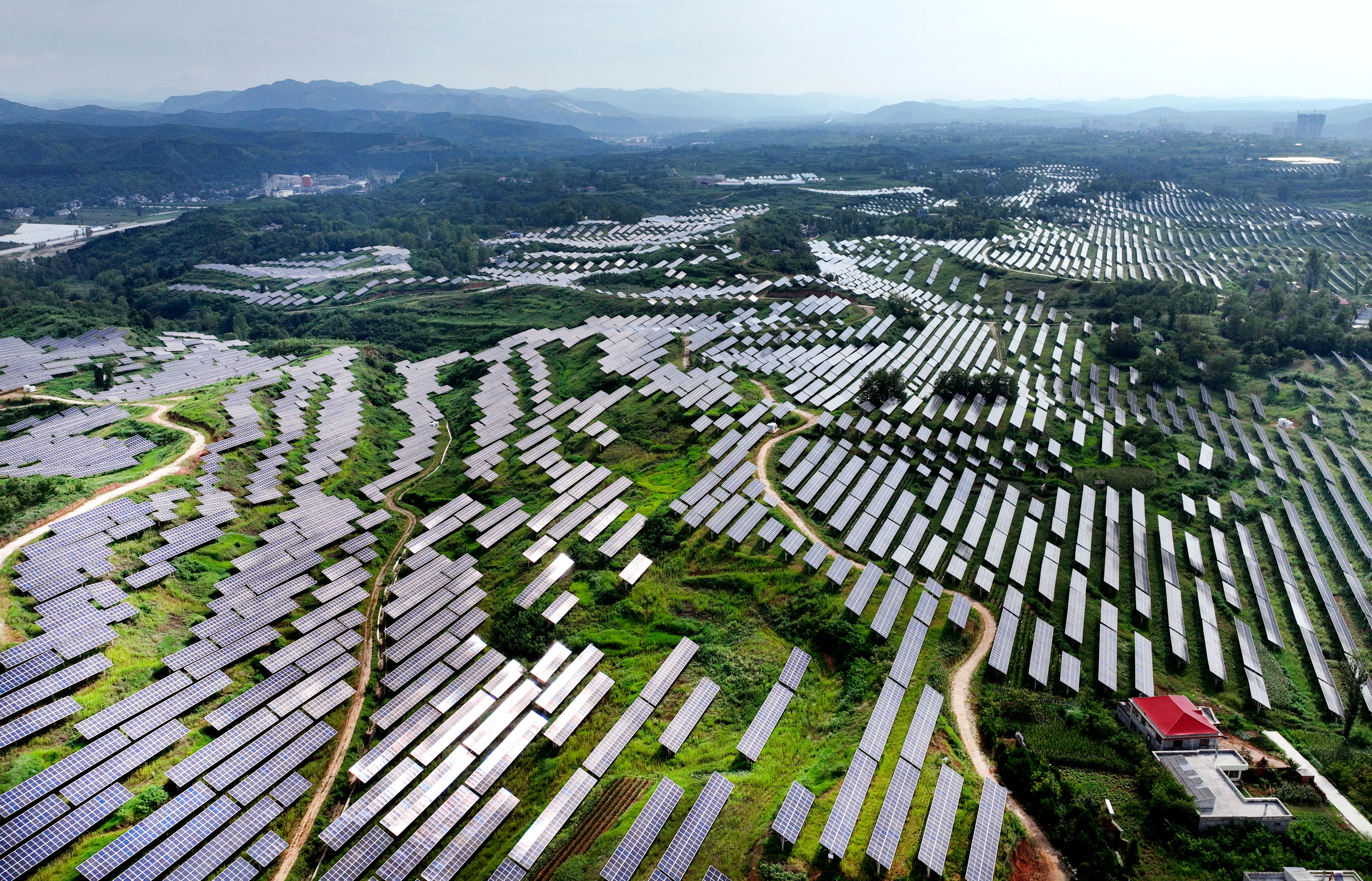Carbon Reduction: A Greener China
The photo shows the 100MW photovoltaic farm in Luonan county, northwest China's Shaanxi province. (PHOTO: XINHUA)
By LU Zijian
China's drive to promote its green and low-carbon transformation of energy has reaped impressive results according to figures from the National Development and Reform Commission.
These show the country's energy intensity dropped by 26.4 percent in 2021 from that of 2012, and carbon intensity by 34.4 percent.
The proportion of coal consumption in the country's primary energy consumption decreased from 68.5 percent in 2012 to 56 percent in 2021.
Largest clean power generation system
China has established the largest clean power generation system in the world. The installed capacity of renewable resources in China has surpassed 1.1 billion kW, equaling nearly 30 times that of the Three Gorges Dam and ranking first in the world.
On December 20, 2022, the Baihetan hydropower station, second only to the Three Gorges Dam in terms of total installed capacity, went into full operation, marking the completion of the world's largest clean energy corridor, incorporating the six massive hydropower stations along the Yangtze River.
With a length of 1,800 kilometers, the corridor has a total installed capacity of 71.695 million kW, generating clean power of about 300 billion kW per year, which could satisfy the electricity needs of 360 million people for a year.
The corridor could effectively relieve the power shortage in Sichuan, Yunan and Guangdong provinces, and provinces in central and east China, which supports the transmission of electricity from the west to the east of the country.
From the operation of the first unit of the Three Gorges Dam in 2003, to December 18, 2022, the power generated by the six large power stations totaled 3.18 trillion kW, which equals a saving of 910 million tons of standard coal, cutting CO2 emissions of about 2.4 billion tons.
New energy storage technologies
Saving electricity for future use is as important as generating clean energy. Pumped storage is traditionally adopted, but new types of energy storage technologies are now flourishing, such as new lithium-ion batteries, flow batteries, air compression and mechanical energy storage.
The energy density of lithium-ion batteries for storage has more than doubled compared with that of ten years ago, and a relatively well-rounded industrial chain has been established.
Air compression storage has also developed rapidly, and large-scale demonstration projects have begun operation. At one such project in Jintan, Jiangsu province, during off-peak hours, air is compressed into a salt cavern by electricity from where it is released to propel the air turbine to generate electricity during peak hours. The project could store 300,000 kW/h during a storage cycle, the equivalent of the electricity used by 60,000 residents a day.
By the end of October 2022, the demonstration work of new energy storage technologies had been carried out in many provinces. In Shandong province, for example, over 111 million kW/h of wind and solar power loss had been saved by five independent operational projects for the first half of 2022.
The saved electricity could satisfy the need of 210,000 households for a month, which equals decreasing standard coal consumption of 34,700 tons, CO2 emissions of 106,600 tons and SO2 of 3,700 tons.
Accelerating production of hydrogen energy industry
Hydrogen energy plays an important role in achieving net-zero emissions, and China has been working on green hydrogen energy generation and application.
The Sinopec green hydrogen pilot project in Kuche county, Xinjiang Uygur Autonomous Region, is the world's largest photovoltaic green hydrogen production project under construction. It is also China's first 10,000-ton photovoltaic green hydrogen pilot project. Once in operation, the project could produce 20,000 tons of green hydrogen energy per year.
Fan Linsong, general manager of Sinopec Xinxing Xinjiang Green Hydrogen New Energy Co. Ltd., said that 80 percent of the construction work has been completed and the project is expected to begin operation by the end of June 2023.
The project will replace natural gas with solar power to generate hydrogen, said Fan, adding that this could cut CO2 emissions of 485,000 tons annually.
In March 2022, the country released a plan for the development of hydrogen energy for the 2021-2035 period, encouraging the application of advanced hydrogen energy technologies.
Currently, trucks, forklifts, and locomotives powered by hydrogen fuel cells have been used in ports, mines and freight rail. Data from the China Association of Automobile Manufacturers shows that 2,400 vehicles powered by hydrogen fuel cells were sold from January to October 2022, a 1.5-fold increase year-on-year.
China has firmly chartered its course to go green and no doubt more innovative steps will be taken going forward to continue building a low-carbon producing country.



